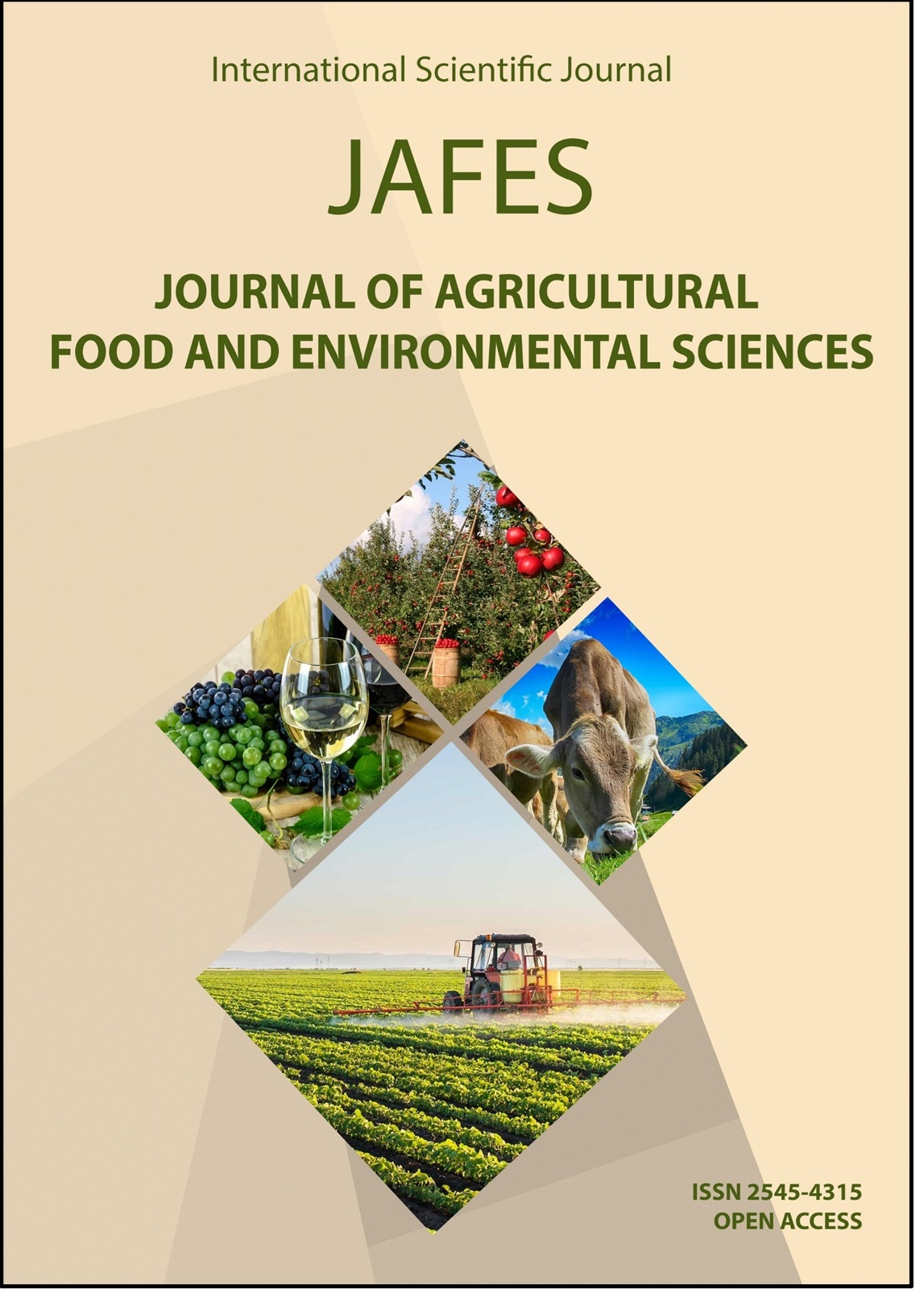TITRIMETRIC AND SPECTROPHOTOMETRIC ANALYSIS OF VITAMIN C CONTENT IN FIVE CITRUS FRUITS IN BENIN CITY, NIGERIA
##plugins.themes.bootstrap3.article.main##
Апстракт
Vitamins C are organic compounds which have to be obtained from the diet because of the inability to synthesise them. Vitamin C is a common household name. Vitamin C (ascorbic acid) is known for the role it plays in many physiological processes in humans. The present research determines vitamin C contents in five citrus fruits namely tangerine (C. reticulata), grape fruit (C. paradisi), orange (C. sinensis), lemon (C. limon), lime (C. aurantiifolia). The fruits were purchased from the New Benin market in Benin City, Nigeria. Vitamin C content of fresh fruit juices was determined by iodo-titrimetric (KI and KIO3) and spectrophotometric methods (potassium permanganate as a chromogenic reagent at 521 nm absorbance). The results obtained by spectrophotometric method lime had the highest vitamin C concentration (29.27 mg/100 mL) and the lowest found in lemon (13.94 mg/100 mL) as lime ˃ tangerine ˃ sweet orange ˃ grapefruit ˃ lemon. In titrimetric method sweet orange had the highest vitamin C content (49.06 mg/100 mL) and the lowest vitamin C content was found in lemon (27.46 mg/100 mL), in this order sweet orange ˃ lime ˃ tangerine ≈ grapefruit ˃ lemon. Therefore, adequate intake of these citrus fruits help in the maintenance of overall health and wellness.
Downloads
##plugins.themes.bootstrap3.article.details##
Референци
Desai, A. P. & Desai, S. (2019). UV spectroscopic method for determination of vitamin C (Ascorbic acid) content in different fruits in South Gujarat Region. Int. J. Environ. Sci. Nat. Res. 21 (1), 556055. https://doi.org/10.19080/IJESNR.2019.21.556056.
Dioha, I. J., Olugbemi, O., Onuegbu, T. U. & Shahru, Z. (2011). Determination of ascorbic acid content of some tropical fruits by iodometric titration. Int. J. Biol. Chem. Sci. 5 (5), 2180-2184. https://doi.org/10.4314/ijbcs.v5i5.37.
Dosedˇel, M., Jirkovský, E., Macáková, K., Krˇcmová, L. K., Javorská, L. Pourová, J., Mercolini, L., Remião, F., Nováková, L. & Mladˇenka, P. (2021). Vitamin C—Sources, Physiological Role, Kinetics, Deficiency, Use, Toxicity, and Determination. Nutrients,13: 615-649.
Drouin, G., Godin, J. R. & Pagé, B. (2011). The genetics of vitamin C loss in vertebrates. Curr Genom, 12 (5), 371–378. https://doi.org/10.2174/138920211796429736.
Elgailani, I. E., Gad-Elkareem, M. A. M, Noh, E. A. A., Adam, O. E. A. & Alghamdi, A. A. (2017). Comparison of Two Methods for The Determination of Vitamin C (Ascorbic Acid) in Some Fruits. American Journal of Chemistry. 2. 1-7. https://doi.org/10.20448/812.2.1.1.7.
Food and Nutrition Board, Institute of Medicine. (2000): Vitamin C. Dietary Reference Intakes for Vitamin C, Vitamin E, Selenium, and Carotenoids. Washington, D.C. National Academy Press. 95-185.
Giannakourou, M. C. & Taoukis, P. S. (2021). Effect of alternative preservation steps and storage on vitamin C stability in fruit and vegetable products: critical review and kinetic modelling approaches. Foods. 10 (11), 2630. https://doi.org/10.3390/foods10112630.
Manuha, M. I., Paranagama, P. A. & Nageeb, B. M. (2019). Quantitative analysis of vitamin C in lime and lemon in vitro: verification of vitamin C on the impairment of obesity. Int J. Adv. Sci. Res. Eng. 5 (10). https://doi.org/10.31695/IJASRE 2019.33549.
National Center for Biotechnology Information (2022). PubChem Compound Summary for CID 54670067, Ascorbic Acid. Retrieved November 12, 2022 from https://pubchem.ncbi.nlm.nih.gov/compound/Ascorbic-Acid.
Najwa, F. R. & Azrina, A. (2017). Comparison of vitamin C content in citrus fruits by titration and high performance liquid chromatography (HPLC) methods. Int. Food Res. J. 24 (2), 726-733.
Okiei, W., Ogunlesi M., Azeez, L., Obakachi, V., Osunsanmi, M. & Nkenchor G. (2009). The Voltametric and Titrimetric Determination of Ascorbic Acid Levels in Tropical Fruit Samples, Int. J. Electrochem. Sci., 4, 276-287
Okungbowa, A.L., Chukuemeke-Nwani, P.O., Mwesigwa, L.S., Omoarelojie, F.O. & Adesina-Ojobaro, A.G. (2022). Comparative Determination of Vitamin C Content of Fresh Fruit Juices. BIU Journal of Basic and Applied Sciences 7 (1): 53-61.
Yang, H. (2013). Conserved or lost: molecular evolution of the key gene GULO in vertebrate vitamin C biosynthesis. Biochemical Genetics. 51 (5–6), 413–25. https://doi.org/10.1007/s10528-013-9574-0.
Zanini, D., Silva, M., Aguiar O., Elizama., Mazalli, M. M., Kamimura, E., & Maldonado, R. R. (2018). Spectrophotometric Analysis of Vitamin C In Different Matrices Utilizing Potassium Permanganate. European international journal of science and technology. 7 (1), 70-84.

